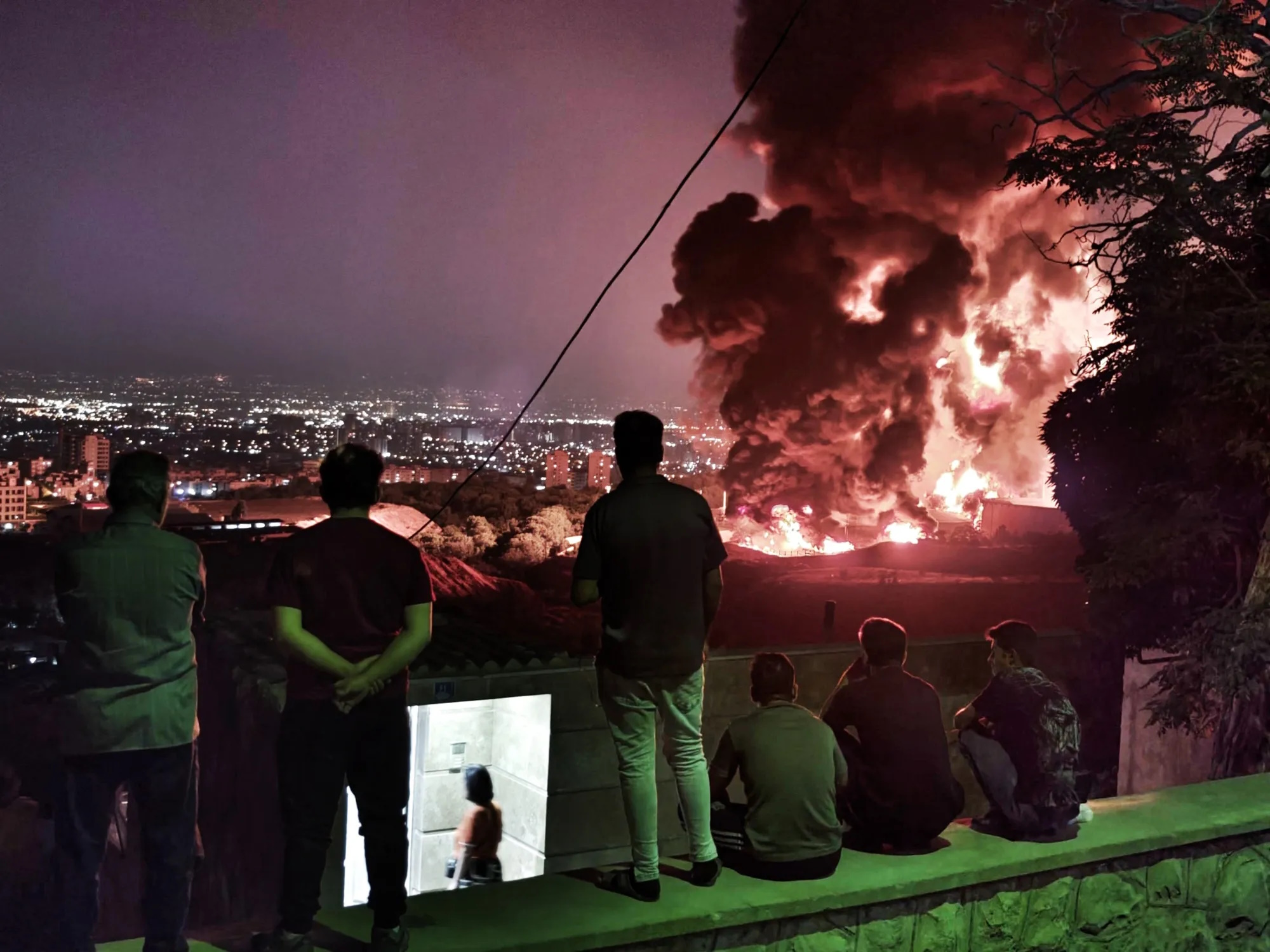The ongoing tensions between Israel and Iran have recently escalated into direct military action targeting energy infrastructure. Over the past weekend, Israel carried out strikes against several energy targets within Iran.
These targets included a significant Iranian gas field and a crucial refinery. However, a key aspect of these strikes caught the attention of global markets and analysts: Iran’s vital oil export infrastructure was deliberately spared. This calculated restraint has sent a specific message to the volatile energy markets. The immediate aftermath on Monday morning revealed that what wasn’t hit is holding sway over prices, rather than the fact that strikes occurred at all.
This selective targeting highlights a strategic nuance in the conflict. While military actions against energy assets typically trigger immediate and sharp reactions in global commodity prices, the limited scope of these strikes had a different effect. Crude oil prices, which had already seen a surge last week due to general geopolitical unease, largely retained those gains but did not experience a fresh, dramatic spike when markets opened.
There was only a temporary, brief upward movement. This measured response from the oil markets suggests that, for now, the conflict’s energy dimension remains within certain perceived boundaries. It signals that market participants are not yet pricing in a worst-case scenario.
Understanding the Market’s Muted Reaction
The relatively calm response of the global oil market, despite direct strikes on energy infrastructure, offers crucial insights into how market participants assess geopolitical risks.
Why Oil Prices Matter Globally
The movement of oil prices extends far beyond the commodity trading floor. They exert ripple effects throughout the entire global economy. High oil prices can translate into increased transportation costs, higher manufacturing expenses, and ultimately, elevated prices for consumer goods. This can fuel inflation, impact economic growth, and even influence central bank policies.
Conversely, stable or declining oil prices can provide economic relief. Beyond their direct economic impact, oil price movements also serve as a “bank shot look” at how the collective “market hive-mind” perceives and quantifies geopolitical risks. In essence, oil prices act as a barometer for global stability, reflecting traders’ and investors’ collective assessment of potential disruptions to supply.
Not Yet a “Worst-Case Scenario”
The muted price movement observed immediately after the strikes indicates a specific market interpretation of the situation. Janiv Shah, Vice President for Commodity Markets at Rystad Energy, a leading energy intelligence firm, articulated this in a recent note. He stated, “The muted price movement today does not signal that the market has priced in an escalation toward the worst-case scenario for oil; a major disruption of supply.”
This assessment is critical. It implies that while the market acknowledges the ongoing tensions and the potential for conflict, it does not yet view the current situation as one that threatens a significant, prolonged interruption of global oil flows. This suggests that traders believe the current strikes are either punitive or symbolic, rather than aimed at cripple major supply arteries. This nuanced understanding prevents panic buying and keeps prices relatively stable.
What Could Trigger an Oil Price Spike?
Analysts are closely monitoring specific types of energy-related escalations that would undoubtedly send global oil prices soaring to unprecedented levels. These are considered the “red lines” for the market.
1. Targeting Iran’s Oil Export Facilities
The most immediate and direct trigger for a significant oil price surge would be Israel hitting Iran’s critical oil export facilities. Iran, as a major oil producer, relies heavily on its export infrastructure to generate revenue. The most notable and vital of these facilities are the Kharg Island terminals. Kharg Island is Iran’s main oil export terminal, handling the vast majority of its crude oil shipments.
A strike on these facilities would directly impact Iran’s ability to export oil, immediately removing a substantial volume from the global supply. Such an event would be seen by the market as a direct and severe disruption to supply, leading to a rapid and dramatic increase in crude prices, as traders would scramble to secure alternative sources in an already tight market.
2. Iran Striking Regional Oil Producing Infrastructure
Conversely, a major escalation could also occur if Iran were to strike regional oil producing infrastructure belonging to other countries. The Middle East Gulf is the world’s most vital oil-producing region, home to major producers like Saudi Arabia, UAE, and Kuwait. These countries possess extensive oil fields, processing plants, and export terminals.
An attack by Iran on the oil facilities of its regional neighbors would directly threaten a much larger portion of global oil supply. Such an act would be seen as a significant expansion of the conflict and a direct challenge to global energy security. The sheer volume of oil that could be disrupted from major producers would send shockwaves through the market, pushing prices sky-high and potentially triggering a global economic crisis. This scenario represents a widespread threat to supply, making it a highly feared outcome.
3. Impeding the Strait of Hormuz
Perhaps the most critical and potentially “market-moving event to watch for” is any attempt by Iran to impede or disrupt the Strait of Hormuz. This narrow body of water, located at the mouth of the Persian Gulf, is an absolutely vital chokepoint for global oil trade. It is the transit point for roughly a fifth of the global oil trade.
This translates to millions of barrels of crude oil and liquefied natural gas (LNG) passing through it daily, bound for markets worldwide. Any significant disruption to traffic through the Strait, whether through military action, naval blockades, or even credible threats, would immediately create immense uncertainty about global oil supply.
Rystad’s Shah emphasizes that such an event “could tip oil markets into unprecedented territory.” The sheer volume of oil reliant on this single passage means that even a temporary closure or increased risk premium would have catastrophic consequences for energy prices and the global economy. It would effectively hold a significant portion of the world’s energy supply hostage.
The Bottom Line: Iran’s “Last Powerful Card”
The ultimate leverage in this tense energy standoff appears to rest with Iran, particularly in a scenario where it feels cornered.
Threatening Mideast Gulf Oil Exports
Clayton Seigle, an oil expert from the Center for Strategic and International Studies (CSIS), provided a stark assessment via email. He articulated the gravity of Iran’s potential response if it perceives itself to be under existential threat. “If Tehran comes to feel its back against the wall, its last powerful card to play is threatening or causing a major disruption of Mideast Gulf oil exports,” Seigle stated.
This highlights a critical strategic reality: Iran possesses the geographical proximity and military capabilities to significantly interfere with oil shipments from the Persian Gulf, especially through the Strait of Hormuz. This gives them immense leverage, as a disruption here would have global ramifications, impacting not just the flow of oil but also the overall stability of the world economy. Such an action would be a desperate measure, but one with undeniable, far-reaching consequences.
Insufficient OPEC Spare Capacity
A major concern underlying this potential “last card” scenario is the global oil market’s limited ability to compensate for such a massive supply disruption. Seigle underscored this vulnerability, noting that “OPEC spare capacity is nowhere near enough to offset a major loss of Gulf oil supply.” OPEC (Organization of the Petroleum Exporting Countries) maintains a certain level of “spare capacity”—the amount of crude oil production that can be brought online relatively quickly in the event of a supply disruption.
This spare capacity acts as a crucial buffer for the global market, helping to stabilize prices during unforeseen events. However, if a significant portion of Middle East Gulf oil supply were to be lost due to conflict, the existing OPEC spare capacity, which is currently estimated to be relatively low, would be wholly insufficient to cover the shortfall. This reality means that any major disruption in the Gulf would lead to an unprecedented supply crunch, driving oil prices to extreme levels and potentially triggering a severe global economic downturn.
The limited buffer capacity leaves the world vulnerable to any significant interruption in the vital energy flows from this geopolitically sensitive region. The deliberate decision by Israel to avoid hitting Iran’s oil export facilities, therefore, momentarily signals an understanding of these high stakes.








